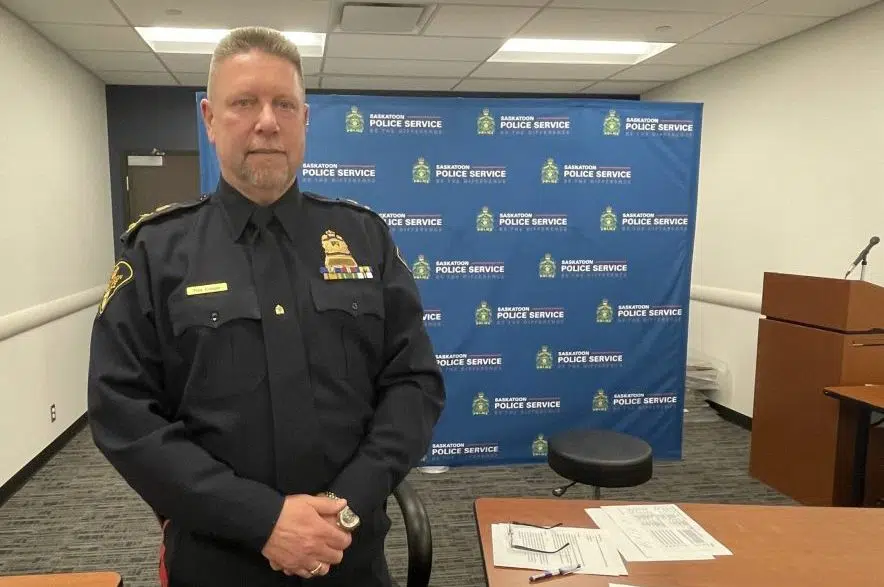Several random violent attacks in Saskatoon over the past few months have impacted how safe people feel in the city, according to Saskatoon’s chief of police.
While Troy Cooper told Gormley on Thursday that random violent attacks are rare, they can leave a long-lasting concern in people about how safe they are in public spaces.
Cooper said attacks of that nature often seem to stem from problems of drug use or mental illness, issues that have been of significant concern and public discussion in Saskatoon in recent months which can be very difficult to police.
That’s why, according to Cooper, police are working to build strong partnerships with community organizations that can offer help to people at the root of their problems.
The police response to these concerns, in the interim, is to ensure a “visible professional presence” in places where people are going to encounter strangers, Cooper said.
Cooper referenced the partnership between Saskatoon police and the Saskatoon Fire Department, particularly concerning homeless encampments.
Cooper said when a new encampment is established, Saskatoon fire resources are often the first to visit the area, meet with people in the encampment to help connect people with resources, and inform them of some of the dangers that style of living can offer.
In addition to fire risks, Cooper said violence and drug use are concerning issues that often arise when encampments grow.
The faster resources can intervene in an encampment environment, the more dangerous situations can be mitigated, Cooper said.
As well, Cooper said having partners to check in on encampment communities can help police keep track of the size of the homelessness problem in cities like Saskatoon.
“If we intervene often, we can keep track of how many people are in encampments (and) how many people are houseless in the community,” Cooper said.
The police chief also spoke to the tricky boundary officers have to straddle. Police have been receiving thousands more calls about suspicious persons in communities, Cooper shared. However, he said being homeless in an area is not criminal.
The significant number of calls police are receiving, though, do tax police services.
Further, traditional policing methods are not deterring or preventing vulnerable people from criminal offences. Cooper said thousands of dollars in fines have been handed out to people on the street. Those fines are simply not paid.
“It’s clear we need to have more of a co-ordinated, strategic response,” Cooper told Gormley.
Such a response, Cooper noted, would have to identify what Saskatoon needs, specifically, according to what gaps in service exist in the city and what particular drugs, for example, might be impacting people.
Cooper also pinpointed the need for more addictions treatment and supportive housing in the city.
Crime stats update
Overall in Saskatoon, Cooper said some of the same long-term crime trends that began in the middle of 2021 are still being seen.
A slower increase in crimes against persons has been surveyed, but a significant increase in these types of offences was seen in July.
He said the overall trends show more minor-level assaults and robberies happening. Cooper said theses are crimes of opportunities.
Last year at this time, 61 robberies had happened. This year, the number is at 90 offences — a big jump, according to Cooper.
The police chief also noted that crimes against property have increased by 12 per cent, driven by minor thefts and shoplifting.
Following the national trend, fraud has increased by 10 per cent, which Cooper said is usually online or cyber-related — like the various ongoing grandparent scams that continue to pop up in Saskatoon.











